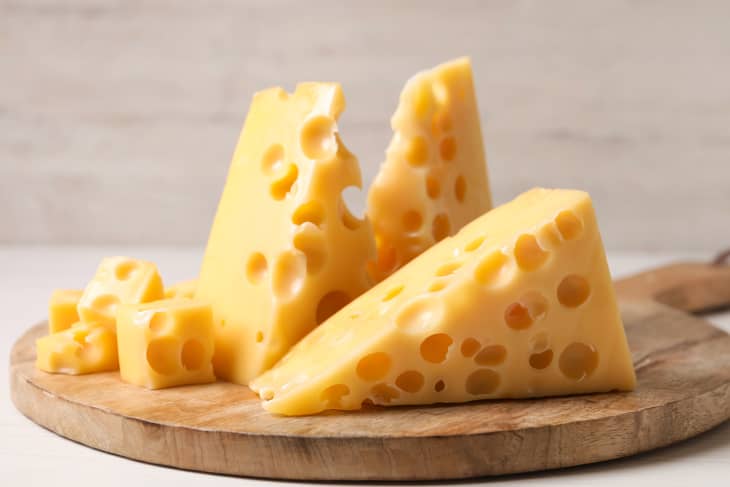People Are Just Discovering Why Swiss Cheese Actually Has Holes — and They’re Losing It
Swiss cheese is known for its iconic gaping holes, but have you ever given second thought as to why that is? Time and time again, mice nibbling on cheese has popped up in TV shows and cartoons, but that surely can’t be the reason why. Nor does the thought of them putting holes into the cheese post-production really make sense either. I personally had never given it much thought, so I polled The Kitchn team to see if they had any ideas, and most were just as stumped as I was.
Paulina Jayne Isaac, senior editor of news and features, similarly hadn’t really thought twice about it either and said, “I have no idea! Swiss cheese is one of those foods that I just accept and have never thought too much about.” Lindsay Funston, editor-in-chief, said, “It’s weird that I’ve never looked into this because I have always thought it’s odd that there are holes?!”
The more I thought about it, the more I wondered if it had something to do with the way it was made, and other colleagues had the same hunch. Quinn Fish, lifestyle editor, said, “I’m guessing it’s something that happens during the fermentation process?” Patty Catalano, food editor, said, “I think it’s from gasses released during the cheesemaking process.” Catalano’s right! The holes are created during the fermentation process, but there are two theories as to why that is.
The first theory was created in 1912 by William Mansfield Clark, a chemist from the Department of Agriculture. Clark argued that the key bacteria that turns it from milk to cheese (Propionibacterium shermanii) is responsible. As the cheese ferments, this bacteria creates carbon dioxide, which turns into bubbles. When these bubbles pop, they form holes. In the cheese world, these holes are known as “eyes.” The size of the eyes are determined by the temperature, storage, time, and acidity levels in the cheese. So the longer the cheese is fermented, the bigger the eyes will be.
More recently Agroscope, a Swiss agricultural institute, has proposed the hay theory. The Swiss scientists argue that when cheese is made in barns, little specks of hay may get into the buckets. These little specks of hay cause weaknesses in the structure of the cheese curds, creating gas during the fermentation process, which in turn becomes the eyes.
It’s less likely that this hay theory holds for more modern ways of producing cheese, but whatever theory you believe, it all comes down to bacteria. So the next time you put out a charcuterie board with some Swiss on it, you have a new fun fact to share.
